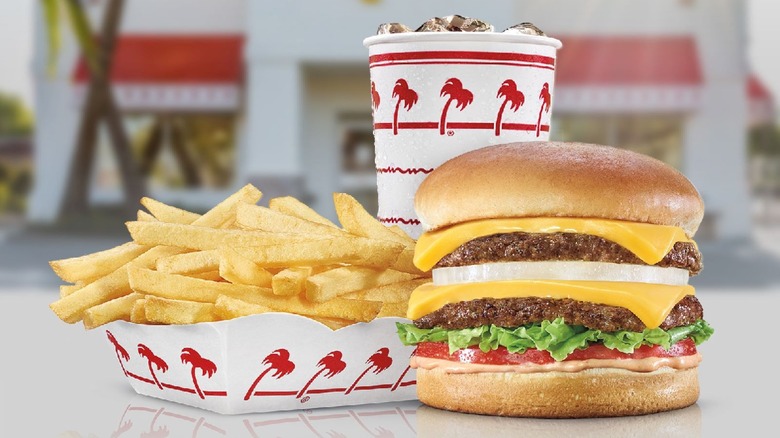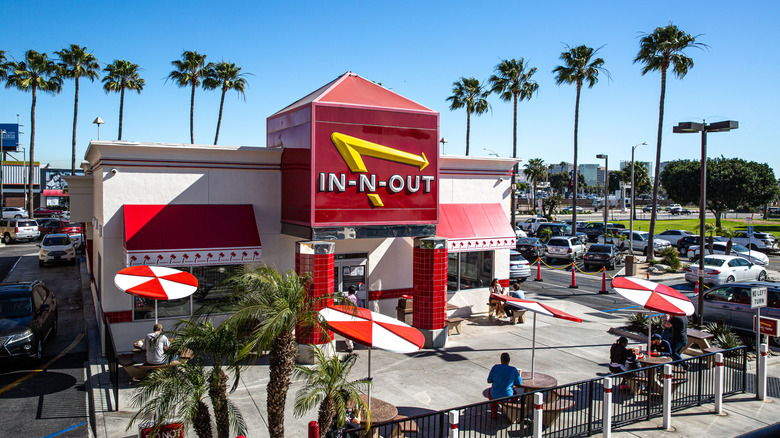The Simple Reason There Are No In-N-Out Locations On The East Coast
In-N-Out may just be a fast food burger joint, but within that world it is a true unicorn. According to its website, it has a commitment to high-quality ingredients that goes above and beyond most competitors, with nothing frozen and the meat ground fresh. In-N-Out is also a notoriously good employer in an industry famous for mistreating its workers. According to QSR, In-N-Out pays almost $6 an hour more than the average fast-food restaurant, and almost 90% of employees would recommend working there. All this has been done with a foundation of a streamlined menu of burgers, fries, and shakes that eschews the wide-ranging options offered by corporate giant burger chains, instead opting for consistency and simplicity.
It's also a wildly popular regional chain that has mostly stayed regional, where its 385 locations are confined mostly to California, Texas and neighboring states, according to Scrape Hero. This stands in direct contrast to what we expect from fast food businesses, with rivals like New York-based Shake Shack quickly going national after their early success. With its local loyalty and quality food, it is no surprise the chain has developed a fanatical following in its home state. Meanwhile the sad souls on the East Coast are left reading about secret menu items and wondering what they're missing. So why hasn't In-N-Out followed in the footsteps of so many other chains before them and branched out?
In-N-Out's expansion is constrained by its quality control
Anyone who's loved a once-regional, chain restaurant knows expansion can bring complicated feelings. On one hand, you're happy more people get to experience it, and that it might be more convenient to grab when traveling. On the other hand, the restaurant loses the sense of exclusivity that comes from eating food that can only be had at a particular place. According to Business Insider, the Cali-based burger chain has not strayed far from home because of a desire to maintain strict control over its supply chain of fresh ingredients. While the company is adding locations, everything must be done within driving distance of its two existing distribution centers (in Baldwin Park, California and Dallas, Texas), greatly limiting how fast In-N-Out can expand.
This is compounded by another choice In-N-Out has made about controlling the company: the lack of franchising. Allowing independent owners to open franchises is how many fast food companies expanded so quickly, including the most famous user of the franchise model, McDonalds. However, as Eater reports, franchising brings with it a host of problems, not the least of which is the drop in consistency from store-to-store, as operations get more separated from the main company and individual owners cut corners.
In-N-Out remains a family-owned business, and has maintained that franchising is off the table. So while East Coast burger lovers may be waiting a long time for an In-N-Out to open near them, they can take a little solace in knowing it's for a good reason.

